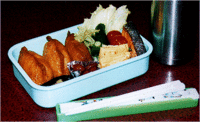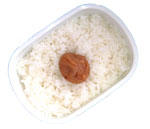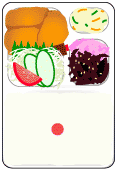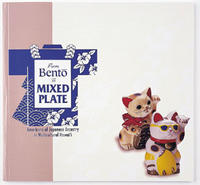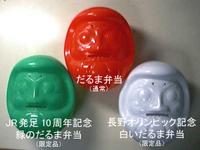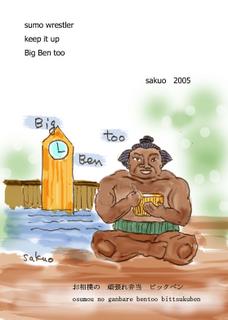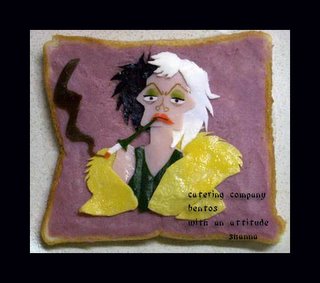:::::::::::::::::::::::::::::::::::::::::::::::::::::::::::::::::::::::::::::::::::::::::::::::::::::
Morning-Glory (asagao)
***** Location: Japan
***** Season: various, see below
***** Category: Plant
*****************************
Explanation

Finch and Morning Glory - Ohara Koson (1877-1945)
These simple beautiful flowers capture the mind of any poet !
In poetry, they remind us of the brevity and transience of life.
Convolvulaceae family. Morning glories
The plant was introduced into Japan 1200 years ago by embassies to Tang China which brought back seeds for medicinal use. Crushed, the seeds were used as a powerful laxative and diuretic. From the Edo period the plant was widely cultivated for decorative purposes, and towards the end of the 19th century was introduced to Europe, where it was referred to as
"Japanese Morning-Glory".
There are famous markets in Edo, and even now in Tokyo, where these flowers are sold.


Pharbitis nil Chois
Asagao, the Japanese means "Morning Face".
Let us look at some kigo with them.
:::::::::::::::::::::::::::::::::::::::::::::::::::::::::::::::::::::::::::::::::::::::::::::::::::::
................... Kigo for Summer
Market selling Morning-Glories, asagao ichi 朝顔市
Market at Iriya in Edo, Iriya asagao ichi 入谷朝顔市
Click HERE to see the Market !
This was the most famous market for these flowers in Edo and is still held in our day at the Temple of Kishimo-Jin in Iriya.
There are about 120 stalls selling all kinds of Asagao plants and amulets.
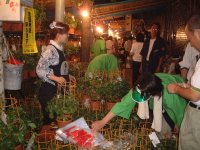
http://www.midoricho.com/shitamachi/asagao/asagao.htm
. Iriya 入谷 and Taitō 台東区 Taito Ward .
ooo ooo ooo ooo ooo ooo ooo ooo ooo ooo ooo
seedlings of the morning-glory, asagao no nae 朝顔の苗
kigo for early summer
Click HERE to look at them !
kazaguruma no hana 風車の花 (かざぐるまのはな)
"windwheel flower"
tenshiren 転子蓮(てんしれん)
tenshi botan 纏糸牡丹(てんしぼたん)
kazagurumasoo 風車草(かざぐるまそう)"windwheel plant"
Calystegia pubescens, a kind of morning glory
. Windwheel 風車 kazaguruma .
:::::::::::::::::::::::::::::::::::::::::::::::::::::::::::::::::::::::::::::::::::::::::::::::::::::
................... Kigo for Autumn
Early Autumn
morning-glory, asagao 朝顔
..... kenngyuuka 牽牛花
..... 蕣 (this kanji is also used for the Rose of Sharon, mukuge)
Western Morning-Glory, seiyoo asagao 西洋朝顔
Morning-Glory with a heavenyl color,
sora-iro asagao 空色朝顔
Click HERE to look at them !
:::::::::::::::::::::::::::::::::::::::::::::::
Late Autumn
Seed of the Morning-Glory, asagao no mi 朝顔の実
..... tane asagao 種朝顔
Click HERE to look at them !

朝顔 Kawarazaki Shoodoo 河原崎奨堂 (1889-1973)
*****************************
Worldwide use
Winde, Trichterwinde
Pharbitis nil
:::::::::::::::::::::::::::::::::::::::::::::::::::::::::::::::::::::::::::::::::::::::::::::::::::::
Kenya
kigo for the cold and dry season
. morning glory - Kenya .
Ipomoea
is the largest genus in the flowering plant family Convolvulaceae, with over 500 species. Most of these are called morning glories, but this can also refer to related genera.
© More in the WIKIPEDIA !
:::::::::::::::::::::::::::::::::::::::::::::::::::::::::::::::::::::::::::::::::::::::::::::::::::::::::::::::::
Sometimes the asagao is quoted as one of the
. Seven Flowers / Herbs of Autumn 秋の七草 aki no nanakusa.
*****************************
Things found on the way
Lady Asagao to Prince Genji
(Genji Monogatari)

秋はてて霧の籬にむすぼほれある
かなきかにうつる朝顔
aki hatete kiri no magaki ni musubore aru
ka naki ka ni utsuru asagao
Autumn is ending,
And the mist along the fence
Thickens into gloom
For a faded morning glory
Now withered almost away.
Tr. Edwin A. Cranston
:::::::::::::::::::::::::::::::::::::::::::::::::::::::::::::::::::::::::::::::::::::::::::::::::::::
A sweet called "Morning Glory",
in memory of Chiyo-Ni, the famous poet
A sweet for July

© Seasonal Sweets of Japan
:::::::::::::::::::::::::::::::::::::::::::::::::::::::::::::::::::::::::::::::::::::::::::::::::::::
asagao mamori 朝顔守 morning glory amulet

a talisman to keep you healthy.
It is sold at the Market in Iriya to our day, on July 6 to 8.
They come in various colors made from strong washi paper and are just as pretty as the real plants.
. Amulets and Talismans from Japan - Edo .
. tsurushibina, tsurushi bina つるし雛 / 吊るし雛 hanging hina dolls .
*****************************
HAIKU
朝顔に 釣瓶とられて 貰い水
asagao ni tsurube torarete morai mizu
the morning glory
took the well-bucket away from me -
I go to the neighbour for water
Chiyo-Ni
Tr. Gabi Greve
:::::::::::::::::::::::::::::::::::::::::::::::::::::::::::::::::::::::::::::::::::::::::::::::::::::
あさがほに我は飯くふおとこ哉
asagao ni ware wa meshi kuu otoko kana
by the morning-glories
I am this rice-eating
fellow
Tr. Gabi Greve
Discussion and further translations :
. Matsuo Basho - Food Haiku .
My gate is bolted, my garden overgrown.
With morning glories. I sit alone.
Matsuo Basho
.................................................................................
朝顔や昼は鎖おろす門の垣
asagao ya hiru wa joo orosu mon no kaki
蕣や是も又我が友ならず
asagao ya kore mo mata waga tomo narazu
Matsuo Basho closing down in 1693 :
. heikan no setsu 閉関の説 .
More haiku about asagao and yugao by
. Matsuo Basho 松尾芭蕉 - Archives of the WKD .
:::::::::::::::::::::::::::::::::::::::::::::::::::::::::::::::::::::::::::::::::::::::::::::::::::::
朝顔のこく咲にけりよ所の家
asagao no koku saki ni keri yoso no ie
morning-glories
blooming thick...
someone else's house
朝顔や下水の泥もあさのさま
asagao ya gesui no doro mo asa no sama
morning-glories
even in sewer mud
a morning scene
Issa
Read more of Issa's Haiku.
Translated by David Lanoue
:::::::::::::::::::::::::::::::::::::::::::::::::::::::::::::::::::::::::::::::::::::::::::::::::::::
a morning glory pot
cool breeze
before the rain
Etsuko Yanagibori
bindweed --
along the dirt road side
errosion
"chibi" (pen-name for Dennis M. Holmes)
Cherrypoetryclub
:::::::::::::::::::::::::::::::::::::::::::::::::::::::::::::::::::::::::::::::::::::::::::::::::::
today again
I choose the longer way –
morning glories
Tomislav Maretic, Croatia, 2007
:::::::::::::::::::::::::::::::::::::::::::::::::::::::::::::::::::::::::::::::::::::::::::::::::::::

photo credit : Andrea Klein, Hamburg, Germany
morning glory
even the petals sit still
seeking color
- Shared by - Louis Osofsky -
Joys of Japan, 2012
:::::::::::::::::::::::::::::::::::::::::::::::::::::::::::::::::::::::::::::::::::::::::::::::::::::::
Hi! My little hut
Is newly thatched I see . . .
Blue morning-glories”
― Issa,
source : Japanese Haiku:

morning glories
already tired at the noon,
my friend Kikaku
- Shared by Tomislav Maretic -
Joys of Japan, 2012
*****************************
Related words
***** "Night Face", yorugao 夜顔
moonflower, giant moonflower
..... "Night-meeting flower" 夜会草
Kigo for early autumn
Calonyction aculeatum, Ipomea alba
Abendwinde
Click HERE to look at it !
often also identified as
yuugao 夕顔 "evening face" bottel gourd
see below
quote
Noh Play - Hashitomi / Hajitomi 半蔀
Near the end of the period of summer ascetic training, called Ango or Geango (cloistering himself for seated meditation for ninety days), a Buddhist monk living in Unrin-in Temple in Kitayama, Kyoto, prays to console the spirits of flowers offered to Buddha every day. At dusk a woman appears and offers a white flower. When the monk asks the name of the exceptionally beautiful flower, the woman answers that it is a moonflower. Pressing on, he asks the woman’s name, she says that her identity will soon be revealed even she does not give her name. Further, the woman says she came from the shadow of this flower and lives somewhere near Gojō in Kyoto.
Leaving these words, she disappears in the moonflower.

After listening to the tale of the love affair between Hikaru Genji and Lady Yūgao (Moonflower) from a villager, the monk visits the Gojō area, following the woman’s story. When the monk visits this place, there is a lonely-looking house just as in the past, with hinged half wall grilles entangled with blooming moonflowers.
When the monk tries to console Lady Yūgao’s soul, the one who appears by opening up the hinged half wall grille is the ghost of Lady Yūgao. She narrates the memory of her love for Hikaru Genji and dances. Lady Yūgao repeatedly begs the monk to console her soul and returns inside the hinged half wall grille before the break of day.
It was all a dream the monk had. Everything happens in the monk’s dream.
source : www.the-noh.com/en/plays
:::::::::::::::::::::::::::::::::::::::::::::::::::::::::::::::::::::::::::::::::::::::::::::::::::::
bottle gourd, Flaschenkürbis
Lagenaria siceraria var. hispida
yuugao maku 夕顔蒔く(ゆうがおまく)sowing bottle gourds (seeds)
kigo for mid-spring
.................................................................................
yuugao 夕顔 (ゆうがお) bottle gourd (plant)

yuugaodana 夕顔棚(ゆうがおだな) shelf for bottle gourds, Flaschenkürbisspalier
kigo for late summer
.................................................................................
yuugao no mi 夕顔の実 (ゆうがおのみ)
bottle gourd (fruit)
"fruit of the evening face"
kigo for early autumn
.................................................................................
. WKD : Kobayashi Issa 小林一茶 .
夕顔や祭の客も一むしろ
yuugao ya matsuri no kyaku mo hitomushiro
evening faces open --
the festival guest, too
on a straw mat
Tr. Chris Drake
This hokku was written early in the 5th month (June) in 1814. This was a very important period for Issa, since, at 52, he'd just gotten married on 4/11 to a woman named Kiku, the 28-year-old daughter of a farmer and grain dealer in a town a couple of miles away from his hometown. Later Kiku returned to her parents' house for a while, and on 5/5 Issa went to her parents house, apparently for the first time. In his diary he writes "Issa became an adopted son," humorously suggesting that by entering his wife's natal home he was also entering her family register as the adopted son and changing his family name to his wife's surname.
This matrilocal form of marriage was still fairly popular among farmers and merchants in Issa's time, though the samurai class was patriarchal and patrilocal. Actually, Issa's marriage was patrilocal -- probably because his own father's marriage was -- and he is just joking about entering his wife's family, but his humor surely contains some emotional truth, since he lost his mother and was separated from his father when he was young, and his mother-in-law now treats him like an outsider. No doubt Issa hoped he would able to have close relations with Kiku's parents and gradually become closer to the people living in his village and in Kiku's village. After staying the night at his wife's natal house, Issa returned the next day to his hometown, and his wife, her mother, and two other people followed him on the 5/8.
It happens that 5/5 (in 1814 it was on June 22) is the date of one of the largest festivals of the year in Japan, the Tango Festival, so it seems likely that the festival mentioned in the hokku is this festival. On 5/5 people took baths in warm water with wild flag leaves floating in them to purify themselves and protect themselves from diseases during the hot summer ahead, when epidemics were common. In many rural areas in Issa's time 5/5 was also known as "woman's house," and women -- legally unable to own property -- were allowed to own half of one tatami floor mat, which was symbolic of owning the whole house.
In some areas men were supposed to stay outside all day, while village women chanted shamanic songs and carried out coming-of-age ceremonies for teenage girls inside. This custom is thought to have developed out of shamanic ceremonies performed by women at rice-planting designed to ensure a good crop. (In 1814, Issa says that rice-planting began on 4/24.) At the same time, under the influence of the ruling samurai class, more and more commoners were placing displays of samurai dolls and small swords and spears in their houses on 5/5. Many houses also raised pennants, the most common of which were shaped like carp vigorously swimming upstream. Special food was also served, especially rice cakes wrapped in an oak leaf.
Moonflowers (morning glories, often white, that open at night) were not a usual part of the 5/5 festival. If this hokku was written at Kiku's home, perhaps the "evening faces," as the flowers are called in Japanese, blooming on a fence at the house. Luckily for Issa, men are allowed to enter the house during the festival, and his parents-in-law are no doubt serving sake and special food. Issa uses the image of a woven straw mat too indicate that he, still a visitor or guest, has been accepted as Kiku's husband. The mats could be placed on the porch or in a room with a board floor or in the yard outside. In any case, Issa obviously enjoys being able to sit down -- that is, to become intimate -- and relax with Kiku's family as a new member. The opening of the evening-blooming moonflowers that are watched by Issa and members Kiku's family seems to suggest the simultaneous "opening" of the faces and hearts of all those sitting on mats as they watch the flowers open and get to know each other
A few hokku later is this hokku:
母親や涼がてらの祭り帯
haha-oya ya suzumi-gatera no matsuri-obi
mother
wears a festival sash
and stays cool, too
This might be Issa's mother-in-law if Issa is thinking of her as the mother of his wife rather than more formally as his mother-in-law, and I translate it to allow that possibility. She's put on a thin cotton robe for the summer festival, and she ties it with a colorful sash tied in a stylish way a middle-aged woman wouldn't use with her ordinary robes. Festival is a hot image, since people are excited, and Issa implies that she feels hot, perhaps further suggesting that she ties her robe a little loosely to cool off. If this is Issa's mother-in-law, the further suggestion would be that a third reason for her way of dressing is that she now feels relaxed with Issa around and has warmly accepted him as a son-in-law. The straw mat and the sash would then both suggest close but unspoken human bonds.
Chris Drake
:::::::::::::::::::::::::::::::::::::::::::::::::::::::::::::::::::::::::::::::::::::::::::::::::::::
***** Bindweed (hirugao) 昼顔
Kigo for mid-summer
Fa. Concolvulus
Bindweed is the common weedy version of the morning glory. It has white to blue flowers, smaller than the cultivated types, and the flowers open and close daily, as opposed to morning glories that bloom only for a single day.
bindweed clambers
around the swingset
with no swings
M. Kei, US
WKD : Chesapeake Saijiki

hirugao hokku by
. Matsuo Basho 松尾芭蕉 - Archives of the WKD .
.................................................................................
kigo for mid-summer
hamahirugao, hama hirugao 浜昼顔 (はまひるがお)
seashore false bindweed, beach morning glory
Calystegia soldanella
:::::::::::::::::::::::::::::::::::::::::::::::::::::::::::::::::::::::::::::::::::::::::::::::::::::
Reference
Sweets from Japan (wagashi)
Chiyo-Ni (Chiyoni), Kaga no Chiyo jo (1703-1775)
. Gourds and melons as KIGO
:::::::::::::::::::::::::::::::::::::::::::::::::::::::::::::::::::::::::::::::::::::::::::::::::::::
[ . BACK to WORLDKIGO . TOP . ]
[ . BACK to DARUMA MUSEUM TOP . ]
- #asagao #morningglory -
:::::::::::::::::::::::::::::::::::::::::::::::::::::::::::::::::::::::::::::::::::::::::::::::::::::





